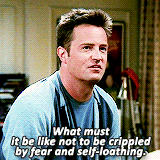In a world of polarized views on everything from toilet paper direction to whether or not the Earth is truly an oblate spheroid, it is of no surprise that even healthcare providers have come under intense scrutiny in the past few years, escalating to the point of rallies and protests, both for and against said companies. Of course, few companies see such an array of reactions as Planned Parenthood.
Most of the controversy surrounding Planned Parenthood is in reaction to the abortion services they offer. Planned Parenthood currently offers two ways of terminating a pregnancy: an in-clinic procedure or a pill option. There are positive factors to consider in both routes. The in-clinic abortion allows a doctor to be present for the procedure, which many women find reassuring. In-clinic abortions work more than 99% of the time. There are two abortion surgeries offered by Planned Parenthood, which the doctor will recommend based off of how far the patient is into their pregnancy.
The first in-clinic abortion offered is a suction abortion, also referred to as a vacuum aspiration. This procedure is the most common type of in-clinic abortion. A gentle suction is used to empty the uterus of the patient. This option is typically offered until about 14-16 weeks after the patient's last period.
The second type of in-clinic abortion is Dilation and Evacuation (D&E), which uses suction and medical tools to empty the patient's uterus. This termination route is offered when the time frame of the abortion is past 16 weeks post-period.
A patient may feel more comfortable terminating their pregnancy in the privacy and comfort of their own home. Planned Parenthood offers the pill option for this situation. "The Pill" is actually two different medicines that work together to end the pregnancy. The first pill, mifepristone, is given to the patient at the clinic. This pill blocks the patient's progesterone, which is needed for pregnancies to grow normally. Somewhere between 6-48 hours later, depending on the doctor's recommendation, the patient takes the second drug, misoprostol. This drug essentially causes a heavy, cramp-filled period to empty the uterus. The process is similar to a miscarriage and is offered as a way to end pregnancy up to 70 days after the missed period.
The debate surrounding abortion has religious, ethical, and philosophical aspects to consider. While the morality of abortions existing is being debated, no one should ignore the logicality of offering a clean, safe environment for those who wish to terminate their pregnancies to do so.
Planned Parenthood offers more services than just abortions, however. The healthcare provider also offers birth control, pregnancy testing, and HIV testing. It leads the market in men's, women's, and LGBT+ healthcare options, as well as being the world's leading provider of sex education.








































